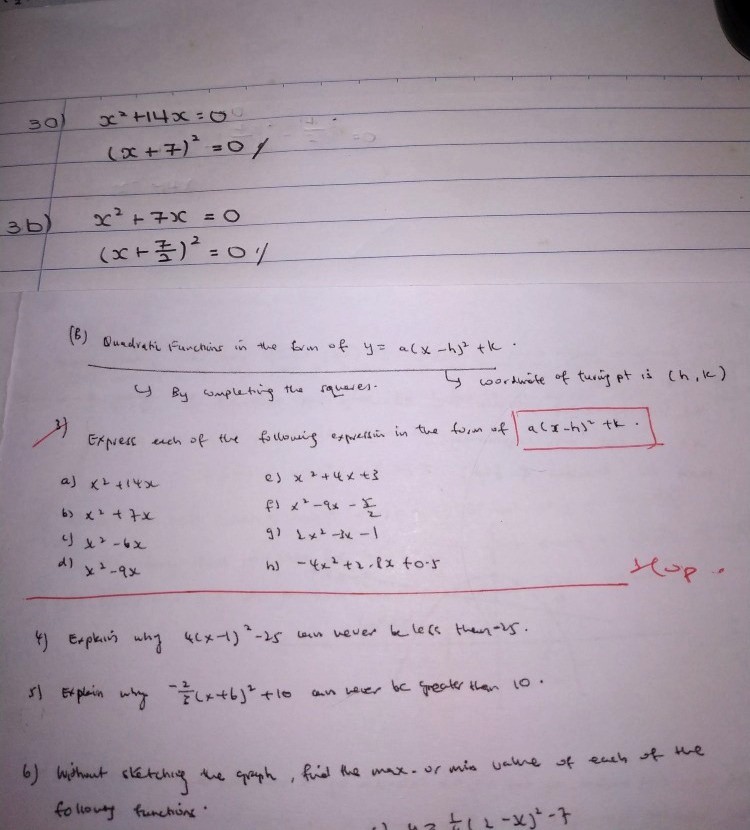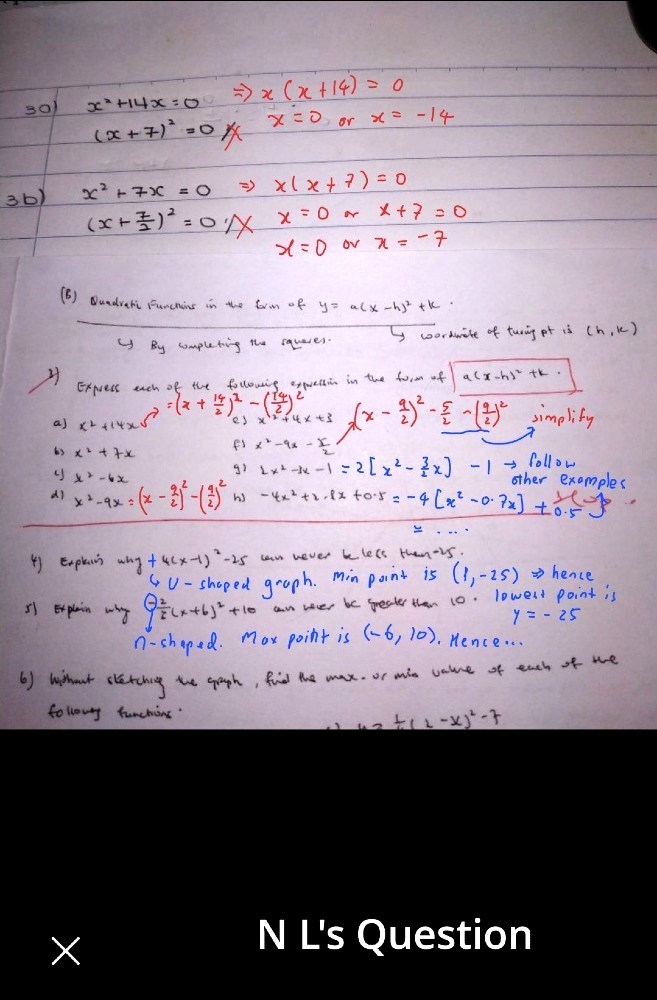Ask Singapore Homework?
Upload a photo of a Singapore homework and someone will email you the solution for free.

Question
secondary 3 | A Maths
One Answer Below
Anyone can contribute an answer, even non-tutors.

Is this question done correctly? And if so are there any other methods to solve this?
Try expanding (x + 7)² and see the result. You will have the following two working lines.
x² + 14x = 0
x² + 14x + 49 = 0 (based on your second working line)
These are contradictory.
Also take note. We are only trying to express x² + 14x in a completed square format, so the "equals zero" part should not seen. These expressions are not automatically equal to zero (unless we are trying to solve for the values of x for which x² + 14x is zero).
x² + 14x
The technique of completing the square uses the expansion idea (x + a)² = x² + 2ax + a² to try and "lump" both x in the expression x² + 2ax into a single x within the bracket (x + a)² so that we can easily take square roots later on and obtain some values for x.
Take a moment to look at the expression x² + 2ax + a². Do you notice that the coefficient of x (which is 2a) is double the constant term a (within a²)?
This will always be the case!
Knowing this, the idea of completing the square is to introduce "missing terms" to be able to express a quadratic expression into a condensed "squared" format.
The first thing you must take note is to obtain a format x² + 2ax + a² so that we can express this as (x + a)².
Look at x² + 14x.
There is the x².
There is the 14x.
But that's it. Where is the third term?
If you notice it by now, by looking at / comparing the terms in x,
2ax = 14x
a = 7
This "7", which is basically half of the coefficient "14" of x, will be important to complete the square.
The matching partner for x² + 14x is therefore 7², if you have followed the above carefully. Half of 14 is 7. We take this 7...and then square it.
x² + 14x
= x² + 14x + 7² - 7²
But why do we include "- 7²" in the above? This is to maintain neutrality amongst the steps above. However, the first three terms in the expression can now be combined together into a single, compact format.
x² + 14x
= x² + 14x + 7² - 7²
= (x + 7)² - 7²
= (x + 7)² - 49
It is this technique which gives rise to the name "completing the square". The three terms x², 14x and 7² are necessary to allow us to obtain the completed square format.
x² + 7x
= x² + 7x + (7/2)² - (7/2)²
The "- (7/2)² is there to maintain neutrality amongst the working steps.
x² + 7x
= x² + 7x + (7/2)² - (7/2)²
= (x + 7/2)² - (7/2)²
= (x + 7/2)² - 49/4
The signage (in this case, the "+") in (x + 7/2)² will follow the coefficient of x.
Instead, if we have x² - 7x, the above will look like this instead.
x² - 7x
= x² - 7x + (7/2)² - (7/2)²
= (x - 7/2)² - (7/2)²
= (x - 7/2)² - 49/4
The only difference is that the negative coefficient of x will result the negative term inside the completed square bracket later on.
See 1 Answer





